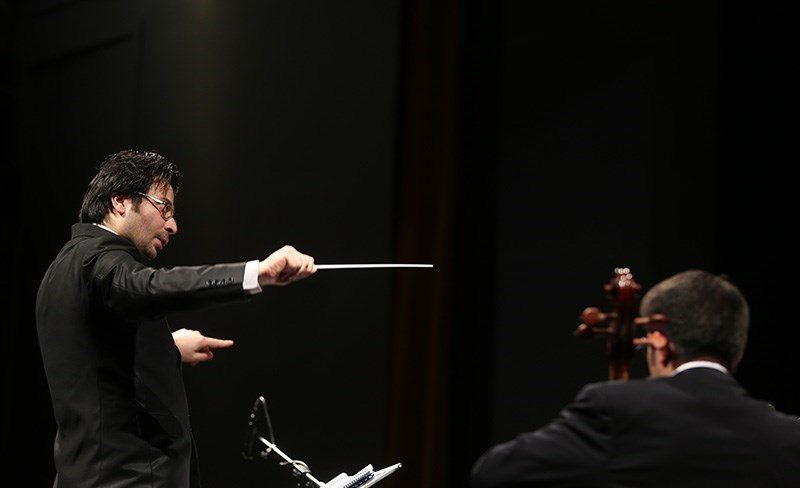
In a bold but uneven concert at Tehran’s Vahdat Hall, conductor Maziar Younesi and the AISO Symphony Orchestra struggled to balance tradition and innovation, delivering a technically flawed performance of Bruckner’s Symphony No. 7 and the contemporary piece Dirand by the Kaseh Quartet—raising questions about Younesi’s readiness for his upcoming appearance with the Tehran Symphony Orchestra.
October 21–22, 2024 – Vahdat Hall opened its doors to fans of classical and contemporary music for a concert by the AISO Symphony Orchestra under the baton of Maziar Younesi, joined by the Kaseh Quartet. The program featured two contrasting works: the first movement of Anton Bruckner’s Symphony No. 7 and the modern piece Dirand by the Kaseh Quartet.
The evening began with Bruckner’s monumental symphony. Before the performance, Younesi addressed the audience, explaining the complexities of the work in an attempt to bridge the emotional gap between the orchestra and listeners. However, technical challenges soon became apparent. The string section lacked cohesion, with noticeable intonation issues that detracted from the work’s depth. Meanwhile, the brass struggled with soft dynamics, producing a muffled and unclear sound—especially problematic in a piece so dependent on delicate dynamic range.
Rhythmic Instability and Orchestral Disunity
Rhythmic instability plagued several complex passages, undermining the overall sonic texture. Although there were commendable efforts to convey emotional nuance, the lack of rhythmic precision often overshadowed them.
Younesi’s Risky Approach Misses the Mark
Conducting without a score, Younesi’s passionate approach aimed to energize the orchestra. While this might work in more familiar or rhythmically straightforward repertoire, in Bruckner’s long-form, tightly structured symphony, the result was disjointed execution—particularly in the strings, who often seemed uncertain.
The program then shifted dramatically with Dirand, a 40-minute contemporary piece introduced by Younesi as a tribute to Bruckner. Opening with chromatic piano harmonies and a chilly atmosphere, the piece gradually introduced electric guitar and jarring dissonances, enhancing its sense of ambiguity and unease.
A Tedious Forty Minutes
Despite its length, Dirand offered little rhythmic or thematic variety. Most of the shifts were limited to changes in time signatures, with few engaging uses of polyrhythm or extended rhythmic techniques. Even in its climactic sections, the piece fell back on repetition and subtle tempo changes, missing opportunities for more gripping technical or emotional impact.
In essence, this concert showcased a stark contrast between the classical structure of Bruckner and the exploratory mood of Dirand. Yet both pieces suffered from technical flaws and a failure to fully harness the orchestra’s potential. As conductor and arranger, Younesi attempted to build a bridge between tradition and modernity—but the performance made clear that there’s still much ground to cover.
Just two weeks after this underwhelming appearance with AISO and the Kaseh Quartet, Younesi is scheduled to lead the Tehran Symphony Orchestra at the same venue. It remains to be seen whether he can rise to the occasion and offer a more cohesive performance
Written By Farid Parish
